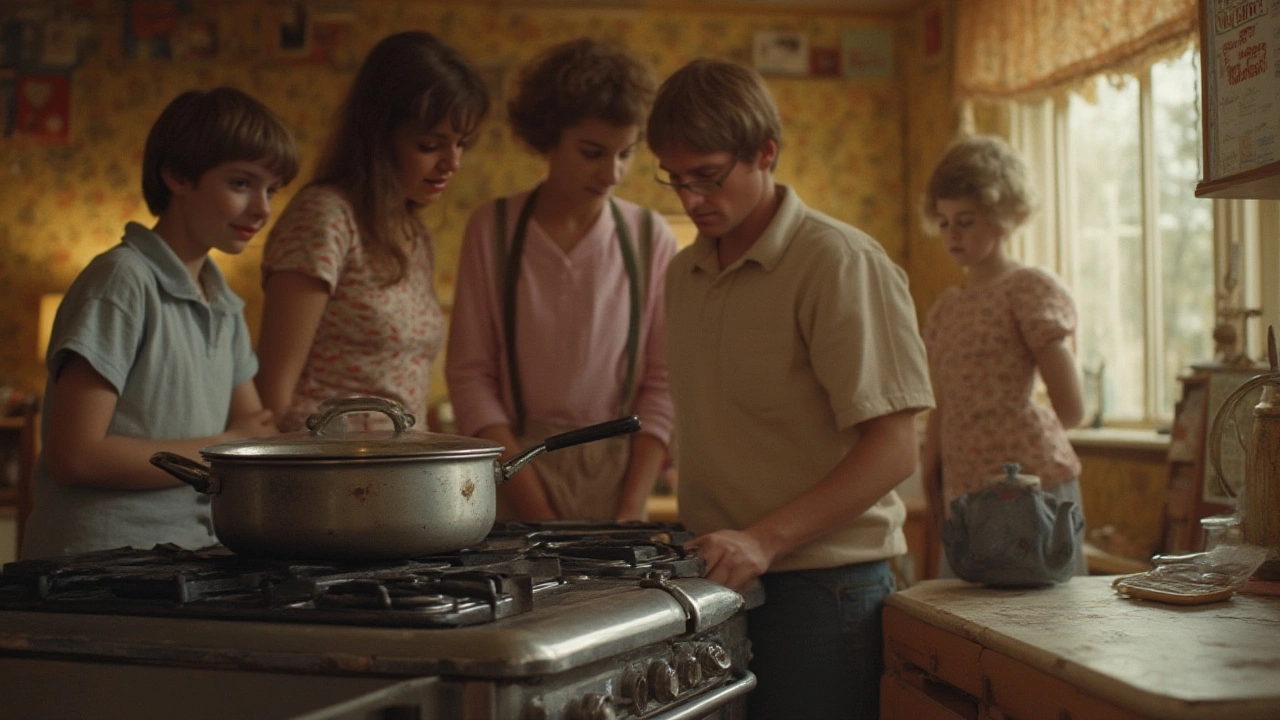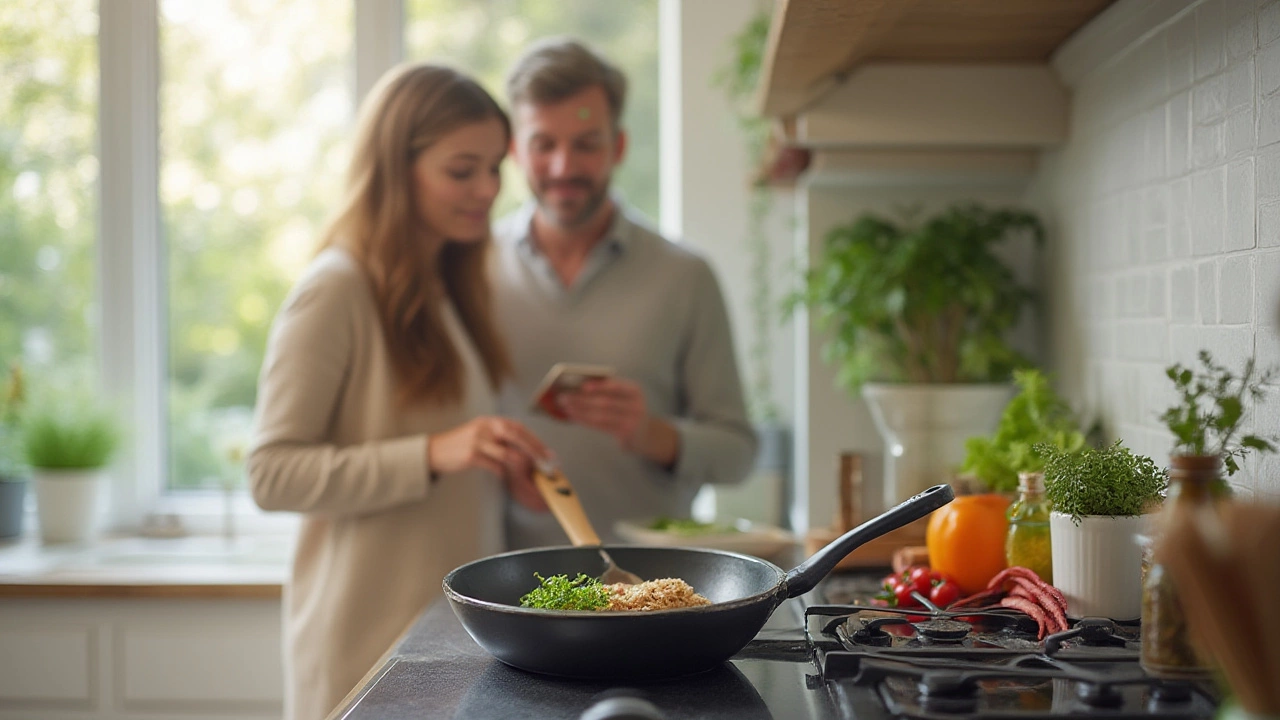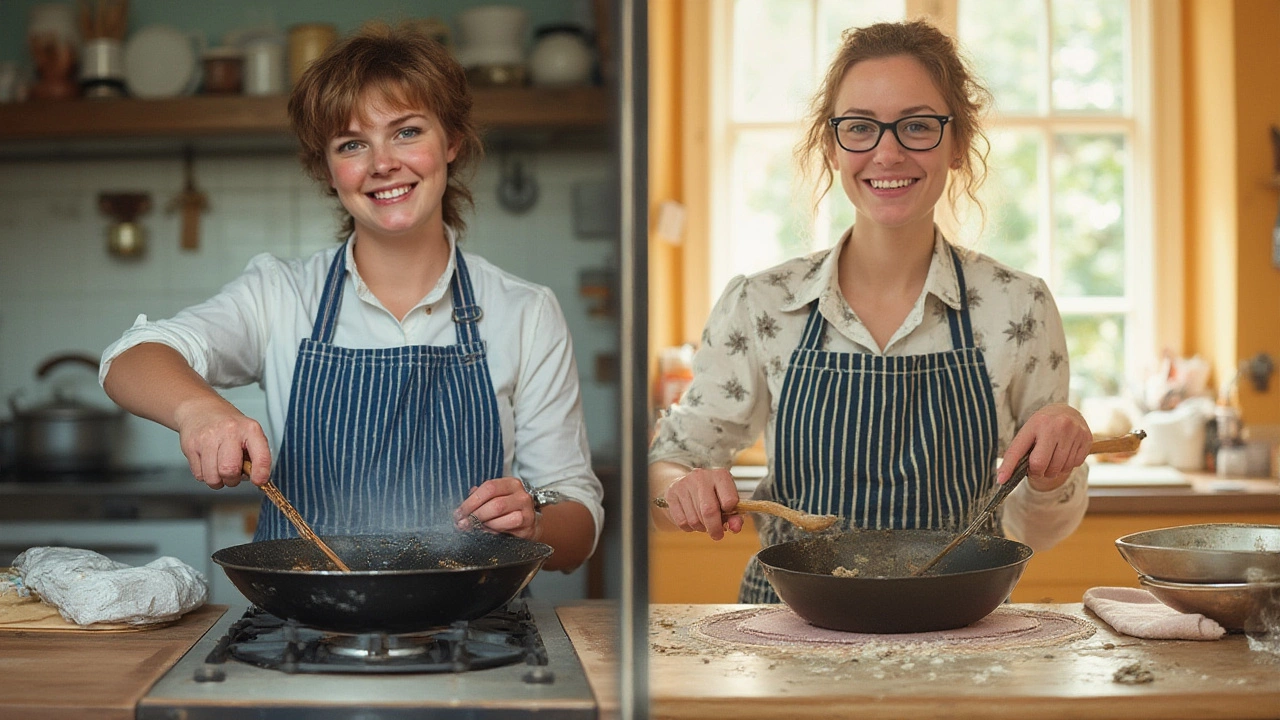When Did Manufacturers Stop Making Teflon Pans? Teflon Cookware History & Facts

People don’t often think about danger when they’re whipping up scrambled eggs, but the story behind Teflon pans is like a kitchen thriller. We trusted these slick, magic pans for decades, only to find there was something nasty bubbling beneath the surface. One day, folks started questioning whether the cheap, easy-cleaning pans could be hiding a dirty secret. If you’ve ever wondered when companies actually quit making those controversial old-school Teflon pans, strap in—because the answer’s not as simple as you might expect.
The Rise of Teflon: How Nonstick Cookware Changed Our Kitchens
Back in 1938, a chemist named Roy Plunkett accidentally invented Teflon (polytetrafluoroethylene, or PTFE) while working at DuPont. The stuff was basically slicker than anything anyone had ever seen. At first, it got famous as a secret ingredient for military gear, but it wasn’t until the 1950s that Teflon hit regular kitchens. Suddenly, frying eggs was a breeze—no sticking, no frantic scraping. By the 1960s and 1970s, Teflon pans were a sensation. Ads promised clean-up in seconds, with little to no oil needed. Housewives snapped them up, and soon just about every kitchen, big or small, had one.
The main reason Teflon works so well is its surface: PTFE is so smooth and hydrophobic that nothing seems to stick to it. That’s a huge time-saver, but there was a catch—making the nonstick coating stick to pans required another chemical: PFOA (perfluorooctanoic acid). This is where things eventually went off the rails.
For decades, nobody paid any attention to what made Teflon pans nonstick. Unless you managed to scorch one (don’t try this at home), most held up to daily flipping, stirring, and searing without complaint. In fact, the frying pans became a symbol of modern living. If you had a Teflon skillet, that meant convenience, a bit of luxury, and zero-fuss meals. Kids grew up with pancakes sliding out smoothly every Saturday. Nobody asked many questions until scientists did—and what they found made everyone uneasy.
The Problem with PFOA: Why Teflon’s Old Recipe Caused Trouble
Here’s where things get sticky. To bond the Teflon coating to pans, manufacturers relied on PFOA, also called C8. In the 1990s, researchers started raising red flags about PFOA getting into water supplies, nearby soil, and—eventually—people’s bloodstreams. Turns out, PFOA doesn’t break down easily. It lingers for years in the environment, and even at low levels, it’s linked to some not-so-charming health concerns: thyroid problems, increased cholesterol levels, even some cancers.
By the late 1990s and early 2000s, DuPont and other Teflon makers faced lawsuits, scary headlines, and investigations by the US Environmental Protection Agency (EPA). If you want a number to put this in perspective, a famous EPA settlement in 2005 required DuPont to pay more than $16 million in fines for hiding information about PFOA hazards.
Now the million-dollar question: Did cooking eggs on a scratched-up Teflon pan mean dangerous chemicals got into your breakfast? Experts still debate real-world risk if you stick to normal stovetop temperatures and don’t overheat your pans. But the PFOA issue forced the industry to get its act together because nobody wanted to gamble with their health at breakfast.
The big push came from regulatory pressure. By 2006, eight major manufacturers promised the EPA to phase out PFOA by 2015—everywhere, not just in the USA, but in Europe and other major markets, too. This meant new Teflon pans sold after 2013–2015 were made without PFOA. To be clear, though, the main ingredient—PTFE—remained unchanged. The difference was all in how manufacturers made that slick coating stick to the pan in the first place.

So, What Year Did They Actually Stop Making the Old Teflon Pans?
Let’s nail down the dates. If you’re picturing a single moment when Teflon pans vanished from shelves, real life isn’t that tidy. There wasn’t a recall, and stores didn’t dump mountains of pans overnight. The phase-out was more like a slow fade.
Here’s what happened:
- The biggest US makers—DuPont (later Chemours), 3M, and their major rivals—officially ditched PFOA in their coatings by 2013–2015.
- After 2015, any mainstream Teflon-branded nonstick cookware made in the US, Europe, Canada, Japan, or Australia should be labeled "PFOA-free." Many brands made the switch quietly a few years ahead of the official deadline (some as early as 2009 or 2010 for their main lines), but 2015 is the safe answer for when *new* Teflon pans stopped using the controversial chemical altogether.
- Old stock and cheap imports from countries without strict regulations could still show up after 2015 (and, let’s be honest, you might even find a few on the back shelf at your great-aunt’s house).
If you’re worried about that trusty old pan in your cabinet, it’s all about the manufacturing date. If the pan was made and bought after 2015 from a reputable brand and store, it’s almost certainly free of PFOA. If you’re running a hand-me-down or a garage-sale “mystery skillet” from the early 2000s, odds are it was made with the old process.
Here’s a quick chart to help you spot the timeframe:
| Period | PFOA Used in Teflon Pans? | Notes |
|---|---|---|
| Before 2005 | Yes | All nonstick pans used PFOA (unless explicitly labeled otherwise) |
| 2005-2013 | Phasing Out | Many large brands switched early; some still clearing out old stock |
| 2015 & After | No | PFOA banned from all major production |
Are Today’s Teflon Pans Safe? What’s Different Now?
Modern Teflon pans are very different from their ancestors—at least in terms of chemical safety. The new generations of nonstick coatings, while still using PTFE (yep, the original Teflon formula), ditched the use of PFOA entirely. Many brands go out of their way to stamp "PFOA-free" or even "PFAS-free" (covering a whole class of chemicals) right on the box. That’s partly about safety and partly about marketing, since shoppers care more than ever where their cookware comes from.
If you’re still hesitant, it might help to know that studies have found PTFE is inert at normal cooking temperatures. Problems only show up if you seriously overheat the pan—600°F (315°C) or hotter—which can break down the coating and release fumes. You’d almost have to forget your pan on the burner for a long time to get those temps, but birds and even humans can get sick if it happens.
Some people still toss out nonstick pans at the first scratch, not because the new PTFE is dangerous, but because a damaged surface doesn’t perform well and bits might flake off into food. PTFE itself isn’t considered toxic by ingestion in tiny flakes (it’ll just pass through), but it’s the fumes from overheating that can cause “polymer fume fever.” So, the golden rule: stick with medium or low heat and never let pans go dry on the stove.
For anyone skeptical of any chemicals, ceramic-coated pans (without PTFE or PFOA) have become a popular alternative. But watch out—some brands exaggerate their durability, and no pan lasts forever if you mistreat it.
Bottom line: Today’s branded, post-2015 Teflon pans are safe for day-in, day-out use as long as you stick to the right temperature and don’t use metal utensils. If you spot that old friend with peeling black flakes, though, it might be time for an upgrade.

Tips for Safe and Long-Lasting Nonstick Cooking
Keeping your nonstick pans in good shape is half science, half common sense. Here are a few simple habits that help your cookware last and your food stay chemical-free:
- Always use plastic, silicone, or wooden utensils. Metal can scratch the coating, letting bits chip off and shortening your pan’s life.
- Don’t crank the stove past medium heat. Nonstick pans don’t need high temps to do their job. If you’re searing steak, reach for stainless steel or cast iron instead.
- Skip nonstick spray. It can leave residue that gums up the surface. Plain oil or butter works better.
- Wait for pans to cool before washing. Sudden changes in temperature make the coating brittle.
- Hand wash gently, even if the label says “dishwasher safe.” Harsh detergents and heat eventually wear down the coating.
- Replace pans once you notice deep scratches, bubbling, or flaking on the surface.
Here’s a trick: If you’re buying a new nonstick pan and want to double-check safety, look for labels like "PFOA-free," "PFAS-free," or specifically mention “manufactured after 2015.” Large brands such as T-fal, Calphalon, and All-Clad follow these rules. If you’re on a budget, avoid deals from “no-name” sellers online, especially if there’s no clear info about the production date.
Don’t stress if you’ve owned a Teflon pan since forever. The biggest concern was the old PFOA process, which is now history in every major brand. And if you’ve still got that hand-me-down skillet from grandma, maybe use it as a flowerpot instead of a frying pan—a new nonstick replacement will give you more peace of mind (and better eggs).